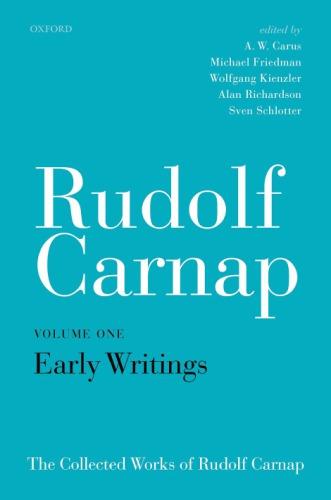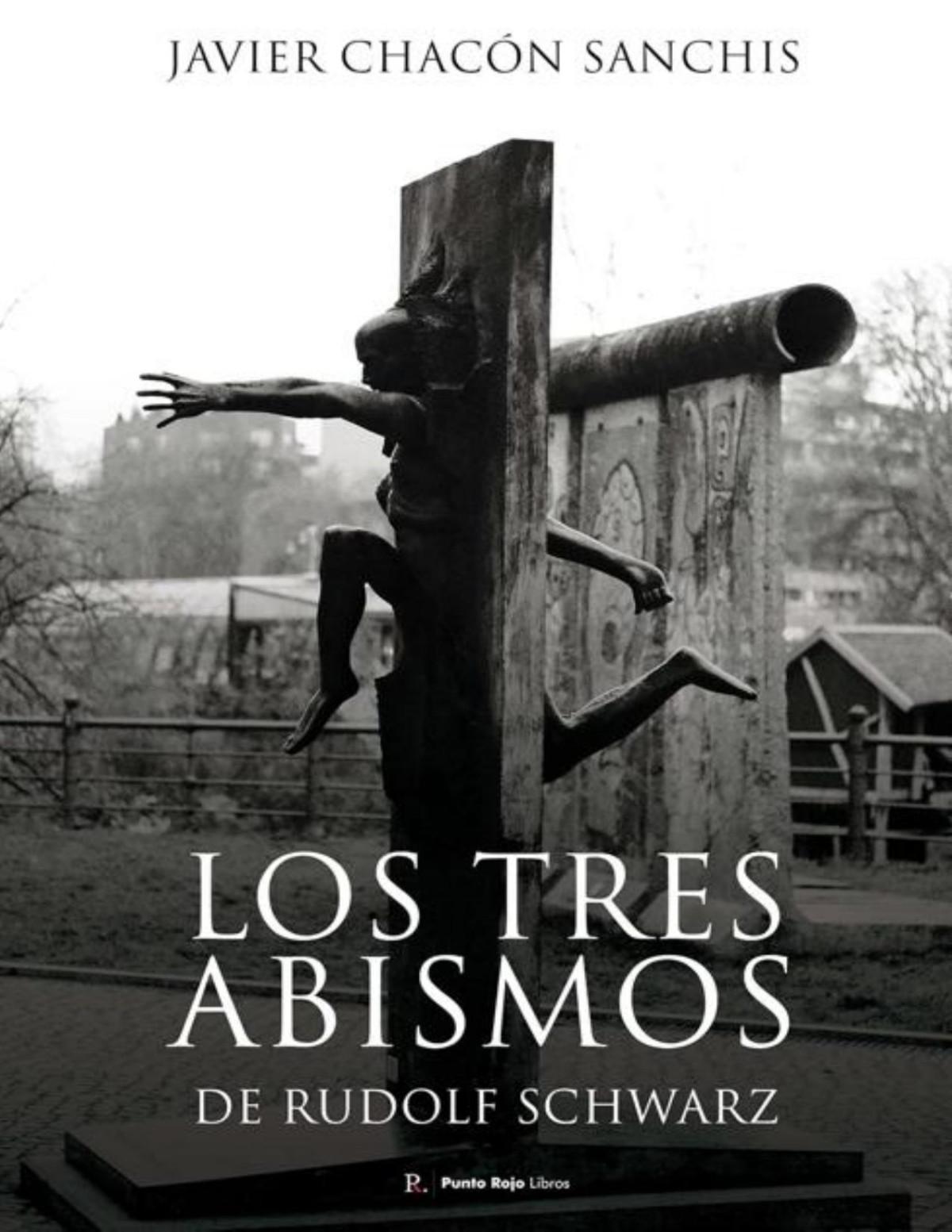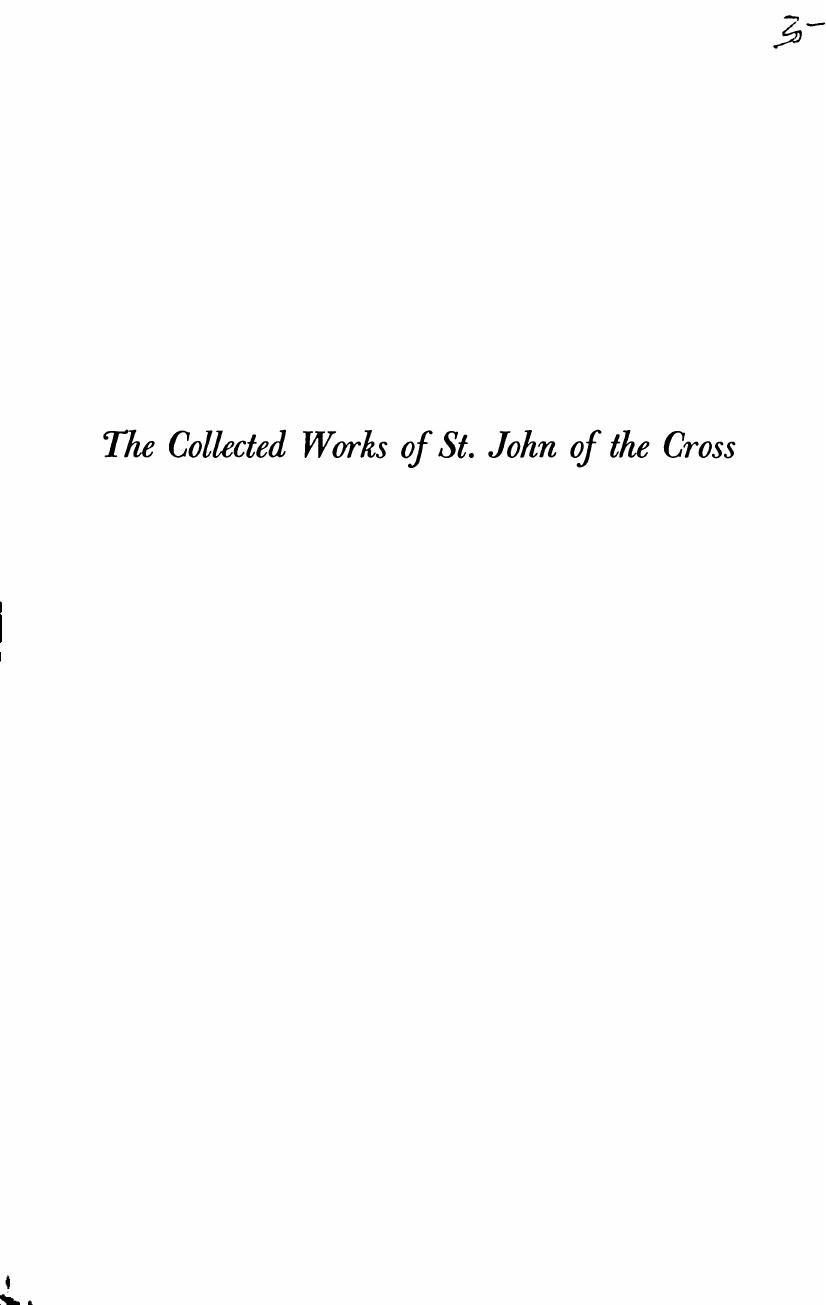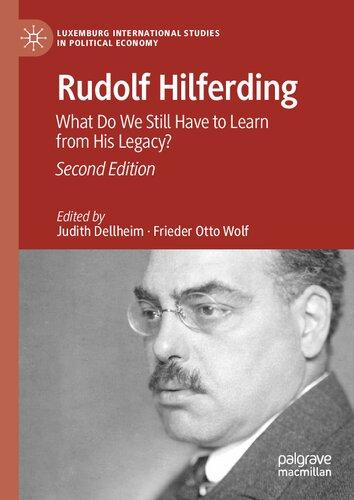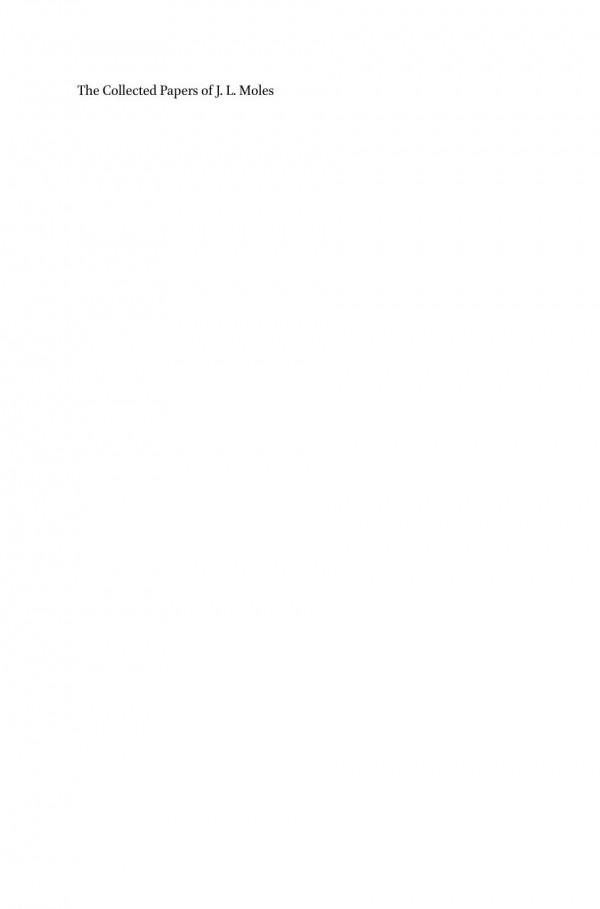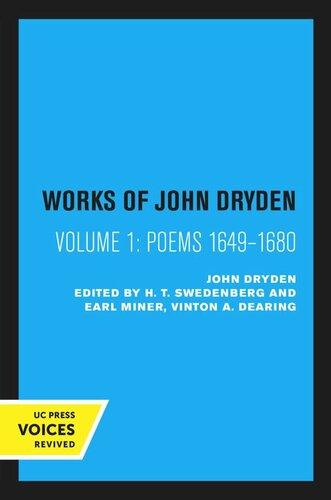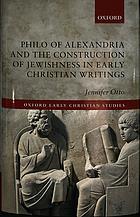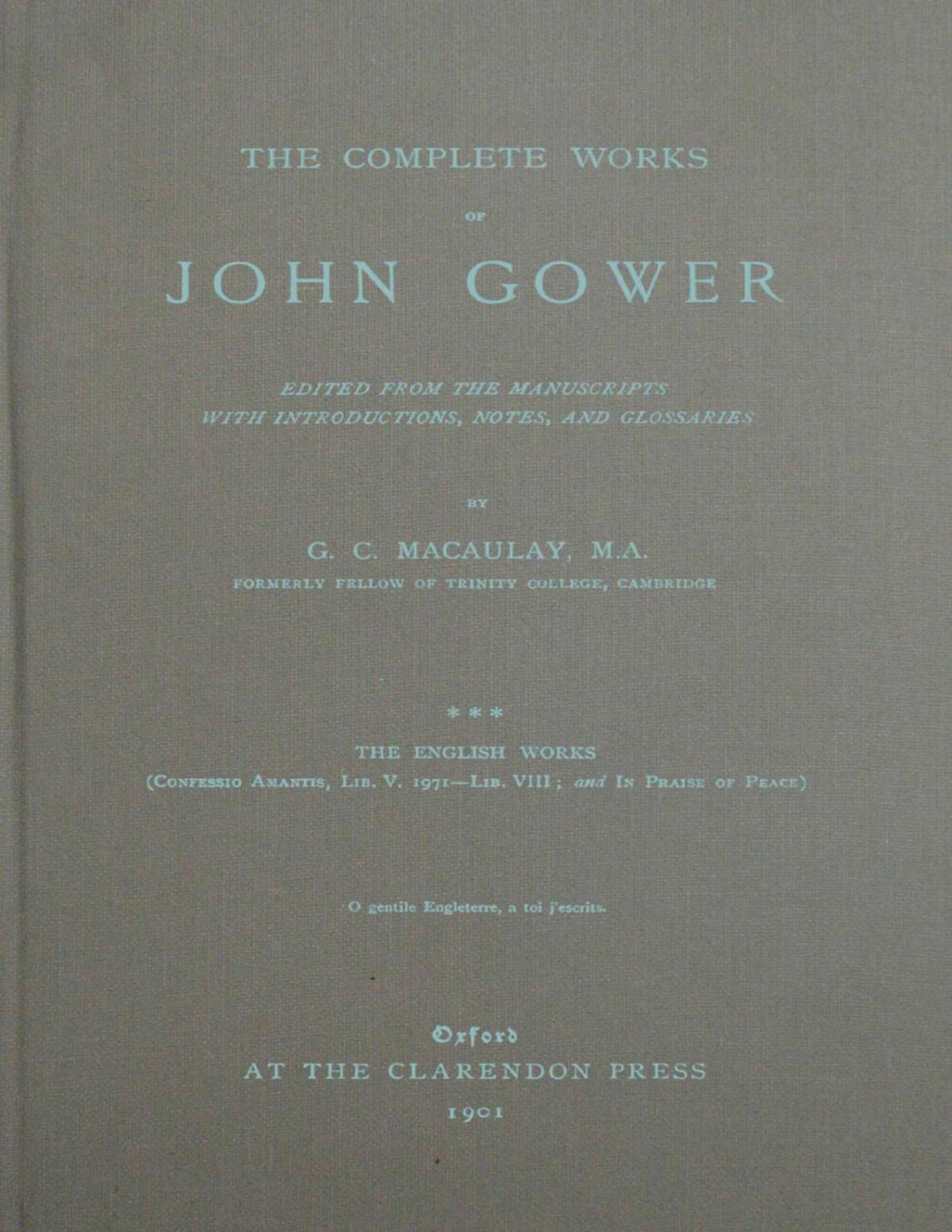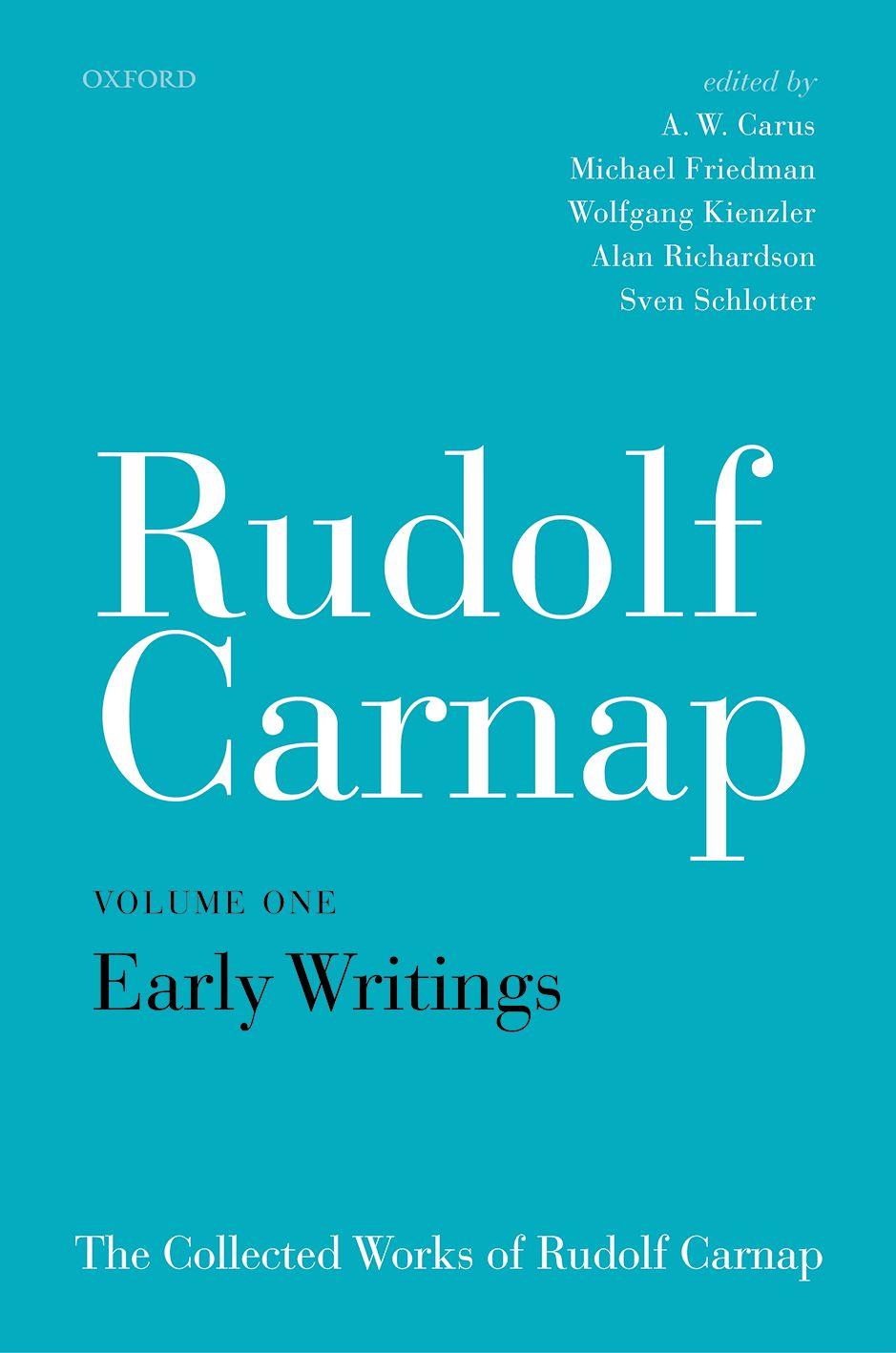The Collected Works of Rudolf Carnap, Volume
1: Early Writings Rudolf Carnap Visit to download the full and correct content document: https://ebookmass.com/product/the-collected-works-of-rudolf-carnap-volume-1-earlywritings-rudolf-carnap/
More products digital (pdf, epub, mobi) instant download maybe you interests ...
Los Tres Abismos de Rudolf Schwarz 1ª Edition Javier Chacón Sanchis
https://ebookmass.com/product/los-tres-abismos-de-rudolfschwarz-1a-edition-javier-chacon-sanchis/
The collected works of St. John of the Cross Kavanaugh
https://ebookmass.com/product/the-collected-works-of-st-john-ofthe-cross-kavanaugh/
Rudolf Hilferding. What Do We Still Have to Learn from His Legacy? 2nd edition Judith Dellheim
https://ebookmass.com/product/rudolf-hilferding-what-do-we-stillhave-to-learn-from-his-legacy-2nd-edition-judith-dellheim/
The Collected Papers of J. L. Moles - Volume 2 John
Marincola
https://ebookmass.com/product/the-collected-papers-of-j-l-molesvolume-2-john-marincola/
Works of John Dryden: Volume 1 Poems 1649–1680 John Dryden (Editor)
https://ebookmass.com/product/works-of-john-drydenvolume-1-poems-1649-1680-john-dryden-editor/
Philo of Alexandria and the construction of Jewishness in early Christian writings First Edition, Impression: 1. Edition Jennifer Otto
https://ebookmass.com/product/philo-of-alexandria-and-theconstruction-of-jewishness-in-early-christian-writings-firstedition-impression-1-edition-jennifer-otto/
Works of John Dryden. Volume 6 Poems: The Works of Virgil in English 1697 William Frost (Editor)
https://ebookmass.com/product/works-of-john-drydenvolume-6-poems-the-works-of-virgil-in-english-1697-william-frosteditor/
Works of John Dryden. Volume 5 Poems: The Works of Virgil in English, 1697 William Frost (Editor)
https://ebookmass.com/product/works-of-john-drydenvolume-5-poems-the-works-of-virgil-in-english-1697-william-frosteditor/
The complete works of John Gower, volume 3 John Gower
https://ebookmass.com/product/the-complete-works-of-john-gowervolume-3-john-gower/
TheCollectedWorksofRudolfCarnap Volume1
TheCollectedWorksofRudolfCarnap RichardCreath,GeneralEditor ArizonaStateUniversity
EDITORIALBOARD SteveAwodeyErichReck CarnegieMellonUniversityUniversityofCalifornia,Riverside
BerndBuldtAlanRichardson IndianaPurdueUniversity,FortWayneUniversityofBritishColumbia
A.W.CarusThomasRicketts
Ludwig-Maximilians-UniversitätMünchenUniversityofPittsburgh
MichaelFriedmanGeorgSchiemer StanfordUniversityUniversitätWien
GregFrost-ArnoldDirkSchlimm HobartandWilliamSmithCollegesMcGillUniversity
GottfriedGabrielSvenSchlotter Friedrich-Schiller-UniversitätJenaFriedrich-Schiller-UniversitätJena
WarrenGoldfarbThomasUebel HarvardUniversityUniversityofManchester
WolfgangKienzlerPierreWagner
Friedrich-Schiller-UniversitätJenaUniversitéParis1Panthéon-Sorbonne
HannesLeitgebSandyZabell
Ludwig-Maximilians-UniversitätMünchenNorthwesternUniversity
SebastianLutzRichardZach UppsalaUniversitetUniversityofCalgary
TheCollectedWorksof RudolfCarnap RichardCreath,GeneralEditor
Volume1:EarlyWritings Editedby A.W.Carus,MichaelFriedman, WolfgangKienzler,AlanRichardson,and SvenSchlotter
Witheditorialassistancefrom SteveAwodey,DirkSchlimm,andRichardZach
GreatClarendonStreet,Oxford,OX26DP, UnitedKingdom
OxfordUniversityPressisadepartmentoftheUniversityofOxford. ItfurtherstheUniversity’sobjectiveofexcellenceinresearch,scholarship, andeducationbypublishingworldwide.Oxfordisaregisteredtrademarkof OxfordUniversityPressintheUKandincertainothercountries
OriginalCarnaptext c theRudolfCarnapHeirs Editorialmaterial c A.W.Carus,MichaelFriedman, WolfgangKienzler,AlanRichardson,andSvenSchlotter2019
MathematicalandPhysicalBackgroundto1925a c DavidB.Malament2019
Themoralrightsoftheauthorshavebeenasserted FirstEditionpublishedin2019
Impression:1
Allrightsreserved.Nopartofthispublicationmaybereproduced,storedin aretrievalsystem,ortransmitted,inanyformorbyanymeans,withoutthe priorpermissioninwritingofOxfordUniversityPress,orasexpresslypermitted bylaw,bylicenceorundertermsagreedwiththeappropriatereprographics rightsorganization.Enquiriesconcerningreproductionoutsidethescopeofthe aboveshouldbesenttotheRightsDepartment,OxfordUniversityPress,atthe addressabove
Youmustnotcirculatethisworkinanyotherform andyoumustimposethissameconditiononanyacquirer
PublishedintheUnitedStatesofAmericabyOxfordUniversityPress 198MadisonAvenue,NewYork,NY10016,UnitedStatesofAmerica
BritishLibraryCataloguinginPublicationData Dataavailable LibraryofCongressControlNumber:2018962517
ISBN978–0–19–874840–3 Printedandboundby
CPIGroup(UK)Ltd,Croydon,CR04YY
TheimageofRudolf Carnap on the jacket is repro duced by p ermission of the ArchivesofScientificPhilosophy,HillmanLibrary,UniversityofPittsburgh LinkstothirdpartywebsitesareprovidedbyOxfordingoodfaithand forinformationonly.Oxforddisclaimsanyresponsibilityforthematerials containedinanythirdpartywebsitereferencedinthiswork.
1918a
Völkerbund—Staatenbund 3 LeagueofNations—LeagueofStates
1921a
WererzwingtdieGeltungdesNaturgesetzes? 11 WhoForcesLawsofNaturetoHold?
1922a
DerRaum:EinBeitragzurWissenschaftslehre 21 Space:AContributiontotheTheoryofScience
1923a
ÜberdieAufgabederPhysikunddieAnwendungdes GrundsatzesderEinfachstheit 209 OntheTaskofPhysicsandtheApplicationofthePrincipleof MaximalSimplicity
1924a
DreidimensionalitätdesRaumesundKausalität:Eine UntersuchungüberdenlogischenZusammenhang zweierFiktionen 247 Three-DimensionalityofSpaceandCausality:AnInvestigationofthe LogicalConnectionBetweenTwoFictions
1925a
ÜberdieAbhängigkeitderEigenschaftendesRaumes vondenenderZeit297
OntheDependenceofthePropertiesofSpaceonthoseofTime
1926a
PhysikalischeBegriffsbildung339
PhysicalConceptFormation
TextualNotes441 Bibliography445 IndexofNames469
Foreword TheCollectedWorksofRudolfCarnap containsalltheworksthatCarnap authorizedforpublicationduringhislifetime.ThisvolumecontainsallofCarnap’spublishedworksfrom1918through1926.RudolfCarnap(1891–1970) ranksasoneofthemostinfluentialphilosophersofthetwentiethcentury, engagingwith—amongmanyothers—Frege,Husserl,Russell,Wittgenstein, Gödel,andQuine.AsW.V.O.Quinewroteofhis“teacherandfriend”:“Carnapisatoweringfigure.Iseehimasthedominantfigureinphilosophyfrom the1930sonward.”Carnapmadesubstantialcontributionstothephilosophy ofscienceandtothephilosophyoflogic,andinparticulartothelong-standing questionofwhatrolephilosophy,logic,andmathematicsaretoplayinthe scientificenterprise.Hesystematicallyaddressedaremarkablerangeofissues, includingobjectivity,thelimitsofintelligibility,empiricism,theroleofthe physicalinpsychology,convention,theunityofscience,semantics,modality, meaning,ontologicalcommitment,probabilityandconfirmation,aswellas boththeobservationalandtheoreticaldiscourseofscience.Andheworked tirelesslyonbehalfofanidealofscienceandphilosophythathesawasacooperativeandinternationalenterprise.Itisnottoomuchtosaythatmanyof Carnap’sideaswererevolutionary,afactthatwassensedbothbythosewho reveredhiminhislifetimeandbythosewhovehementlyrejectedthoseideas.
Carnapworkedindefatigablytoimprove,clarify,andelaboratehisviews, producingabodyofworkimpressiveinitsvolumeaswellasinitsscopeand influence.Abriefchronologyfollowsthisforeword;whatitdoesnotshow isthatbythelate1920sCarnapwasaleadingfigureoftheViennaCircle, rapidlypublishingastreamofpapersandbooksthatattainedthestatusof classics.Hispivotalwork, LogischeSyntaxderSprache of1934,usheredin arevolutioninphilosophy.AndfollowinghismovetotheUnitedStatesthe tideofimportantpublicationsliftedanalyticphilosophytothecentralposition itoccupiesthroughouttheworldtoday.Hisworkdisplaysahighdegreeof coherenceandcontinuity,butitssheervolumemakesthebroadoutlinesofits developmenthardtodiscern,especiallybecausemanyofhispublicationshave longbeenvirtuallyunobtainable.Makingthiscoherencemorevisiblewasone motivebehindthepresentefforttomakehisworksavailableinanaccessible,
viiiForeword comprehensive,anddefinitiveform.Thiseditionwillcontainthetoolsneeded foramorethoroughandbalancedunderstandingofCarnap’swork,andfor therequirementsofanewscholarlyinterestinthehistoricaldevelopmentof analyticphilosophy.TheseriesincludesallofthebooksandpapersCarnap authorizedforpublicationinhislifetime.Theyappearinthelanguageoftheir originalcomposition,andallinEnglishaswell.Wherethoselanguagesare different,theoriginalandanEnglishtranslationareonfacingpages.Someof theoriginalshaveneverbeforebeentranslatedintoEnglish,andevenwhere theyhavebeen,mosttranslationsinthis CollectedWorks areneworrevised. Allthetextsarereset,re-edited,andprovidedwithintroductionsandeditorial notestomakethisbodyofworkaccessibletothecontemporaryreader.
Inundertakingthisprojectwehavehadbeforeustheinvaluableexample oftheeditionofKurtGödel’s CollectedWorks.ThefivevolumesofthatcollectioncontainallofGödel’spublishedwritingsandagenerousselectionofthe unpublishedones,includingmanuscriptsandcorrespondence.Eventhough thepresentcollectionismuchlarger,onlyCarnap’spublishedworkscouldbe included.Paralleleffortshavebeenunderway,however,tobringoutvarious selectionsofCarnap’sunpublishednotes,manuscripts,andcorrespondence.
Thisprojecthasbeenmadepossibleinpartbyaresurgenceofinterest inCarnap’sworkledbyadedicatedgroupofphilosopher-historians,manyof whomareontheeditorialboardorotherwiseinvolvedintheeditorialprocess. Theirhighlevelofscholarshiphasmadeitreasonabletobeginsuchaproject, andtheirunselfisheffortsarebringingittofruition.Theirworkhasinturn madethis CollectedWorks moreurgentlyneeded.AsCarnap’sideasaremore widelydiscussedinbooks,journals,anduniversityclasses,bothstudentsand professionalsneedtohaveavailablethefullrangeofCarnap’swriting,sothat theycanseeforthemselvesthesystematicanddramaticallynewconceptionof philosophythatCarnapdeveloped.
Theeditorsareacutelyawarethatoverthemanyyearsofworkonthe projectwehaveaccumulatedmanydebts,asweshallnodoubtcontinueto do,andmorethanwecanhopetorepay.TheprojectwasinitiatedbyOpen CourtPublishingCompanyanditsChairman,AndréCarus;withoutthisinitial supportandcommitment,theprojectwouldnothavegotofftheground.We aredelightedandgratefulthatOxfordUniversityPresstookuptheproject whenOpenCourtwasnolongerabletocontinueandwhenitseemedthatour effortsmightotherwisefail.Oureditorthere,PeterMomtchiloff,hasbeen extremelysupportive(andpatient)throughalltheremainingstages,whichwe greatlyappreciate.
Carnap’sdaughter,HannelieseCarnapThost,conveyedtheoriginal rightstopublishthesematerials.Hersupportfortheproject,andthatof othermembersoftheCarnapfamily,hasbeenasourceofinspirationand encouragementovertheyears.WenotewithsadnessherpassinginNovemberof2016.HerdaughterErikaCarnapThost,whovividlyremembersher grandfatherfromherteenageyears,hascontinuedtosupportourwork.
Manyotherindividualsandinstitutionshavebeengenerousaswell.In 2000–2001theNationalScienceFoundationprovidedagrantformetocon-
Forewordix ductafeasibilitystudyontheproject.ForthenextfiveyearstheCollegeof LiberalArtsandSciencesatArizonaStateUniversitysupportedaresearch assistanttohelpturnCarnap’sworksintoanelectronicformwheretheycould beeditedandreset.PreparingtheGermantext,whichinvolveditsownspecialproblems,wasmadepossiblebysuccessivetwo-yeargrantsfor2005–07 and2007–09fromtheDeutscheForschungsgemeinschaft(GermanResearch Foundation)toateamattheFriedrich-Schiller-UniversitätJenaheadedby GottfriedGabrielandWolfgangKienzlerthatalsoincludedSvenSchlotter (Grant-Nr.KI1103/1-1andKI1103/1-2).Inaddition,theFulbrightprogram providedascholarshiptoSteveAwodeytosupporthisworkinJena,andthe NationalEndowmentfortheHumanitiesprovidedaCollaborativeResearch Grantforthesameandforeditorialassistance.RichardZachwasawardeda UniversityofCalgarySpecialProjectsGrantforhisworkontheedition.He andDirkSchlimmreceivedagrantfromtheSocialSciencesandResearch CouncilofCanadaaswell.Thesegrantsallowedtheirrecipientstoassumethe substantialburdenofassemblingthetextofthisfirstvolumeandofresolving theenormousnumberoftechnicalandsubstantiveissuesthatariseinaventureofthismagnitudeandcomplexity.Alongthesamelines,RichardZachhas beenprimarilyresponsiblefordevelopingthe“CarnapProjectStyleManual”. Thisisahugein-housedocumentthatreadersneversee,eventhoughthey benefitfromitoneverylineofeveryvolume.
Finally,Iwanttoaddmypersonalthankstothosewhohaveworkedso hardonthisvolumeandtothosewhoarestillengagedinpreparingfuture volumes.Someofthenamesappearinalphabeticalorderonthevarioustitlepages,andsomearemembersoftheEditorialBoard.Theyhavegiven unstintinglyoftheirtime,efforts,andadvice,bothaseditorsofindividual volumesandinoverseeingtheprojectasawhole.Specialthanksareowedfor theskillfulassistanceofBrigittaArdenattheArchivesofScientificPhilosophy attheUniversityofPittsburgh,aswellasforthatofBrigitteParakeningsofthe PhilosophischesArchivattheUniversityofConstanceDepartmentofPhilosophy.Alargeteamofresearchassistantshasalsobeeninvaluabletotheoverall project;itincludedEdwardDean,RodneyGomez,DarinHarootunian,Leslie Hudson,Hans-ChristophKotzsch,MiaMcNulty,DanielRichter,JohnStopple, DominicTilbury,JuneWagner,andSandraWoien.Researchassistantswho workedonaparticularvolumearethankedintherespectivevolume’seditors’ acknowledgements.Alloftheeditorsacknowledgeandthankeachofthem fortheirwork,withoutwhichthisprojectwouldhavebeenimpossible.And onbehalfoftheentireCarnapProject,oursincerethankstoallandtoourcolleagues,students,andfamilieswhohavebeenpatientandhelpfulaswell.The supportwehavereceivedfromindividuals,universities,andgrantingagenciesinseveralcountrieshasmadethisatrulycooperativeandinternational enterprise.Carnapwouldhavebeenpleased.
RichardCreath
Acknowledgements Theeditorsofthisvolumearegratefultothemanypeoplewhohavehelped bringittocompletionandimproveitsquality.Aboveall,theseincludethe LaTeXexpertsontheeditorialboardwhohavemadeitpossibletoaccommodateoureditorialintentionsinLaTeXwithintheoriginalseriesdesign— SteveAwodey,DirkSchlimm,andRichardZach.Theirtechnicalandeditorial assistancehasbeenindispensable,fromtheoverallarchitecturedowntothe minutestdetails.
WewerefortunatethatGottfriedGabrieljoinedtheeditorialboardofthe Carnapedition,sinceheimmediatelytookontheprojectofputtingtogetheran editorialteam—andrepeatedlyfindingfundingforit—toestablishadefinitive GermantextforallofCarnap’swritingsinthefirstfivevolumesoftheedition. WeareextremelygratefulforGottfried’sroleinthiscomponentoftheedition, whichhasespeciallybenefitedthisvolume.
WearegratefultoDavidMalament,whocontributedanarticle-length noteonthemathematicalandphysicalbackgroundtoCarnap’spaper(1925a) inthisvolume,therebymakingitpossibleforreaderstoseeCarnap’seffortsin theearly1920sfromabroaderperspectiveencompassinginsightsfromrecent projectsbroadlysimilartotheearlyCarnap’s.
Wearegratefultothemanyothercolleagueswhorespondedtoqueries andhelpedtoimprovethetranslationsandnoteswithspecializedknowledge aboutparticularaspectsofCarnap’swork,includingSteveAwodey,Erik Curiel,DavidMalament,ErichReck,DirkSchlimm,HowardStein,Clinton Tolley,PierreWagner,andRichardZach.WearegratefultoRichardCreath, theGeneralEditorofthisedition,forcontributingeditorialnotesforCarnap’s booklet(1926a),andforhisthoroughandconscientiousreviewoftheentire volumewhenitwasnearlycomplete.
WeareparticularlygratefultoPierreWagnerfororganizingaworkshop on DerRaum,Carnap’s(1922a)doctoraldissertation,perhapsthemostsubstantialtextinthisvolume,inthePalaisClam-GallasontheWähringerstraße inVienna,whichthenhousedtheFrenchCulturalInstitute.Thisworkshop, heldundertheauspicesofhisproject“Logiscience”fundedbytheFrench AgenceNationaledelaRecherche,tookplaceon1–2June2010withthepar-
xiiAcknowledgements ticipationofSteveAwodey,AndréCarus,JeremyGray,JeremyHeis,Thomas Mormann,ErichReck,AlanRichardson,DirkSchlimm,ErhardScholz,ClintonTolley,andPierreWagner.Themainfocusofthediscussionwereanearly draftofMichaelFriedman’seditorialnoteson DerRaum andadetailedcommentaryonsomeofthesenotesbyHowardStein(whowasnotabletoattend). WearegratefultoHowardandalltheparticipantsandespeciallytothetwo historiansofmathematics,JeremyGrayandErhardScholz,notonlyfortheir specificcontributionstotheeditorialnoteson DerRaum,acknowledgedin therelevantpassages,butfortheirwillingnesstoimparttheirbroadperspectiveonrelativitytheoryandearlytwentieth-centurymathematicsingenerous detail.
WebenefitedimmenselyfromtheexpertiseofBrigittaArdenandBrigitte Parakenings,thearchivistsinPittsburghandKonstanz,respectively,who helpedusreadthemarginalnotesCarnaphadwritteninhiscopiesofthepublicationsinthisvolume,mostlyinhispersonalizedversionofStolze-Schrey shorthand.WearegratefultotheArchivesofScientificPhilosophyattheHillmanLibrary,UniversityofPittsburghfortheirsupportandtheirpermission toreproducequotationsfromdocumentsintheircollectionofCarnapPapers, towhichtheyholdthecopyright.
Finallywearegratefultotheresearchassistantswhocontributedspecificallytothisvolume,EdwardDean,Hans-ChristophKotzsch,andDaniel Richter,aswellastothemembersoftheeditorialandproductiongroupatOxfordUniversityPressresponsibleforshepherdingthisunrulyprojectthrough theirsystemwithsuchassuredandpatientcompetence:PeterMomtchiloff, AprilPeake,CarolineQuinnell,JonathanRowley,andManuelaTecusan.
A.W.Carus
MichaelFriedman
WolfgangKienzler
AlanRichardson
SvenSchlotter
ChronologyofCarnap’sLife 1891 Bornon18MayinRonsdorf,nowpartofWuppertal,inNorthwest Germany.
1898 Father(JohannesSebulonCarnap)dies.Carnapishome-schooleduntil theageoftenbyhismotherAnnaDörpfeldCarnap.
1901 EnrollsattheGymnasiuminBarmen(nowalsopartofWuppertal).
1909 MoveswithfamilytoJena,wheretheyliveinthehouseofAnna’s brotherWilhelmDörpfeld,afamousarchaeologist;Carnapfinishessecondary school.
1910–14 StudiesattheUniversityofJenaandtakescourseswithGottlob Fregeonlogicandthefoundationsofmathematics.DuringthisperiodCarnap alsobecomesinvolvedwith,andtakesaleadershiprolein,thelocalmanifestationoftheGermanYouthMovement,EugenDiederichs’s“SeraGroup”.
1911–12 SpendsasemesterinFreiburgimBreisgau,whereamongother thingsheattendsRickert’slectures(possiblytogetherwithHeidegger)and giveslecturestothelocal“FreeStudents”(theuniversitywingoftheYouth Movement)onvarioussubjects,including“ReligionandtheChurch”.
1914 Embarksondoctoralworkinexperimentalphysics.
1914 WorldWarIbreaksoutinAugustandCarnapenlistsinthearmy.InitiallyassignedtotheCarpathiansbecauseofhisskiingability,heistransferred tothewesternfrontin1916,whereheseessomeofthebloodiestaction.He alsocontinuestofollowtheYouthMovementpressandenthusiasticallyreads Einstein’spapersongeneralrelativity.
1917 WoundedinactionandawardedtheIronCross.TransferredtoBerlin forresearchonwirelesstechnology.HearsEinstein’slecturesonphysics.MarriesElisabethSchöndube,andtheymovetoherparents’houseinBuchenbach nearFreiburgimBreisgau,wherenearlyallthetextsinthisvolumearewritten.
xivChronology
1918 CarnapcontinueshisstudiesatJenafromBuchenbach.Circulates newsletterscontainingitemsfromtheforeignpresscriticaloftheGerman government,withhisowncriticalcommentary.Somemonthsbeforethe armistice,Carnapjoinstheanti–warIndependentSocialistParty(USPD).
1919–20 Completesmaster’s-leveldissertationsinphysicsandinphilosophy (thelatteronthefoundationsofgeometry),andobtainsthesecondaryteaching certificate.
1921 Completeshisdoctoraldissertationinphilosophy, DerRaum,under thesupervisionofBrunoBauch.CarnapwritestoRussellforhelpobtaininga copyof PrincipiaMathematica,andreceivesinsteadalengthylettercontaining themaindevelopmentinlonghand.
1922 ReadsRussell’s OurKnowledgeoftheExternalWorld earlyintheyear, whichsuppliesakeyideaforCarnap’senvisagedconstitutionsystemofall concepts;hewritesthefirstsketchofthe Aufbau,amanuscriptcalled“Vom ChaoszurWirklichkeit”.
1922DerRaum ispublishedintheseriesofmonographsupplementstothe Kant-Studien.
1923 OrganizesfirstconferenceofscientificphilosophyinErlangen,attendedbyHansReichenbach,KurtLewin,HeinrichBehmann,andanumber ofothers.Carnappresents“VomChaoszurWirklichkeit”therebutfindsthat nooneunderstandsit.
1923–24 ContactwithEdmundHusserlandhisgroupattheUniversityof Freiburg.
1925 Writesfirstdraftofthebooklaterpublishedas DerlogischeAufbauder Welt,andgivesatalkinViennathatisbasedonit.
1926 MovestoViennafor“Habilitation”underMoritzSchlickandbecomes PrivatdozentinphilosophyattheUniversity. PhysikalischeBegriffsbildung published.
1927 Beginsworkonthemajorproject Untersuchungenzurallgemeinen Axiomatik.CarnapandotherViennaCirclemembersmeetprivatelywith Wittgenstein.CarnaplaterexcludedbyWittgenstein.
1928DerlogischeAufbauderWelt and ScheinproblemeinderPhilosophie published.
1928–29 KurtGödelattendsCarnap’scourseon“metalogic”(officially “ThePhilosophicalFoundationsofArithmetic”)inthewintersemester.
Chronologyxv
1929 Givesapopularlecture“VonGottundSeele [[OnGodandtheSoul]]” attheErnstMachSociety.Carnapisadvisedbycolleaguesnottopublishthis asitwillmakeitimpossibleforhimtogetajobataphilosophydepartment anywhereinGermany.InOctober,Carnapgivesaseriesoflecturesatthe BauhausinDessau.The“manifesto”oftheViennaCircle,thepamphlet WissenschaftlicheWeltauffassung,writtenbyCarnap,Neurath,andHahn,is publishedtomarkthefoundingoftheErnstMachSociety.Publishes Abriss derLogistik,alogictextbooklargelywrittenin1921–23asanexpositionof Russell’sletterof1921.CarnapmakeshisdivorcefromElisabethofficial; separatedsince1925,theyremainfriends.
1930 InFebruary,AlfredTarskivisitsVienna;inprivateconversationshe convincesCarnapthatthe AllgemeineAxiomatik projectismisconceived.In August,GödelinformsCarnapthathehasprovedtheincompletenessofthe usualaxiomsystemsforarithmetic;ataconferenceinKönigsberginSeptemberGödelannounceshisdiscovery,whichispublishedearlythefollowing year.
1930–40 Co-edits Erkenntnis withHansReichenbach.
1931 Duringasleeplessnighton21January,Carnapconceivesofthe“syntax”approachthatappearstosavetheViennaCircle’sdoctrinesfromthe discoveriesofGödelandTarski.InJune,Carnappresentshisnewapproachto theViennaCircle.IntheautumnhemovestoPragueasprofessorof Naturphilosophie (philosophyofscience)attheGermanUniversity,andembarksona book-lengthexpositionofthe“syntax”approach.Beforemovinghemarries InaStöger,withwhomhehadbeenliving.
1932 “ÜberwindungderMetaphysikdurchlogischeAnalysederSprache” and“DiephysikalischeSprachealsUniversalsprachederWissenschaft”appearin Erkenntnis.Thelatteristhefirstpublicationapplyingthenew“syntax” approach.WittgensteinaccusesCarnapofplagiarism.Quinevisitsearlyin theyearasthefirstdraftof LogischeSyntaxderSprache isbeingtypedbyIna Carnap.CorrespondencewithGödelregardingthefirstdraftofthe Syntax. Intheautumn,afteravacationintheTyrolwithFeiglandPopper,Carnap adoptsthe“principleoftolerance”,firstevidentin“ÜberProtokollsätze”, whichappearsin Erkenntnis lateintheyear.
1933 TheNaziseizureofpowerinJanuaryendsanyhopeCarnapmighthave forajobinGermany,givenhisknownpoliticalandsocialviews.Hebeginsto lookforopportunitiesintheUnitedStates.
1934LogischeSyntaxderSprache published.
1935 AttheInternationalCongressofScientificPhilosophyinParis,Carnap defendsTarski’ssemantics.Atthesameconference,plansforanencyclopedia
xviChronology arelaid,withOttoNeurath.In Erkenntnis,CarnapgivesPopper’s Logikder Forschung alargelypositivereview.
1936 MovestoChicagotobecomeprofessorofphilosophyattheUniversity ofChicago,afterhavingturneddownanofferfromPrinceton.“Wahrheit undBewährung”,thefirstpublicationtoreflectCarnap’snewembraceof semantics,appearsintheproceedingsoftheParisconference.
1936–37 “TestabilityandMeaning”publishedin PhilosophyofScience.
1938–62 Co-edits TheInternationalEncyclopediaofUnifiedScience with NeurathandCharlesMorris.
1939 Carnap’sowncontributionstothe Encyclopedia ispublished,including FoundationsofLogicandMathematics.RussellvisitstheUniversityof Chicago,whereheandCarnapengageinlivelydebatesatajointseminar.
1939–41 OnleavefromChicago,CarnapvisitsHarvardUniversity,wherehe meetsregularlyfordiscussionswithQuine,Russell,Tarski,andothers.Also, CarnaphearsalecturebyRichardvonMisesthatre-kindleshisinterestin probability.
1940 Beginsworkoninductivelogic,aprojectthatwouldcontinuetobeat theforefrontofCarnap’sattentionandtotakeupthebulkofhistimeuntilthe endofhislife.
1942IntroductiontoSemantics published.BecomesaUScitizen.
1943FormalizationofLogic published.
1945 Firstpublicationsoninductivelogic:“OnInductiveLogic”in PhilosophyofScience and“TheTwoConceptsofProbability”in Philosophyand PhenomenologicalResearch.
1947MeaningandNecessity published.
1950LogicalFoundationsofProbability published;“Empiricism,Semantics,andOntology”appearsinthe Revueinternationaledephilosophie.
1951 QuinegivescolloquiumtalkinChicagoconfrontingCarnapwiththe wide-rangingcritiquesoontobepublishedin“TwoDogmasofEmpiricism” andotherpapers.FeiglfirstapproachesSchilppaboutdevotingavolumeofthe bynowwell-establishedLibraryofLivingPhilosopherstologicalempiricism. CarnapandReichenbacharetobethemaintargetfiguresofthevolume.
1952 CarnapmovestotheInstituteforAdvancedStudyatPrinceton,New Jersey,wherehedevotesconsiderabletimetoaprojectonentropythat,to
Chronologyxvii hisfrustration,thephysiciststherehardlyengagewith. TheContinuumof InductiveMethods published.
1953 AfterReichenbach’ssuddendeathinApril,Schilpppersistswiththe planforavolumeintheLibraryofLivingPhilosophers,nowtobefocussed solelyonCarnap.Bytheendoftheyear,thecontributorsareagreedonand thepaperscommissioned.
1954 Mostofthepapersfor ThePhilosophyofRudolfCarnap arewritten, andCarnapbeginshisreplies.CarnapmovestoLosAngelesasHansReichenbach’ssuccessorattheUCLAphilosophydepartment.
1956 Finallybeginsworkontheautobiographyfor ThePhilosophyofRudolf Carnap,andcontinuestoworkontherepliestocritics.
1958 Theautobiographyandrepliesfor ThePhilosophyofRudolfCarnap aresentofftoSchilpp,whoasksforsubstantialcuts.Intheautumnquarterat UCLA,MartinGardnersitsinonCarnap’sseminar“PhilosophicalFoundationsofPhysics”andtape-recordsthesessionsasrawmaterialforapopular book.
1960 AfterrepeatedlydelayingtheCarnapvolume,thepublisherofthe LibraryofLivingPhilosophers,TudorPublishingCompany,terminatesits contractwithSchilpp.OpenCourtPublishingCompanyagreestopublishthe series.
1961 OfficiallyretiresfromUCLAbutcontinuestoteach.
1961 Secondeditionof LogicalFoundationsofProbability.
1963ThePhilosophyofRudolfCarnap publishedbyOpenCourt.
1964 InaCarnapcommitssuicide.Carnap’syoungestdaughter,Hanneliese CarnapThost,comestoLosAngelesfromGermanywithherdaughterErika, tolookafterhim.HeseriouslyconsidersmovingbacktoGermany.
1965 CarnapdefendshisviewsoninductivelogicagainstPopperataconferenceinLondonorganizedbyImreLakatos,whoalsoeditedtheproceedings, publishedin1968.
1966 ThebookresultingfromMartinGardner’sredactionofCarnap’sUCLA seminar, PhilosophicalFoundationsofPhysics:AnIntroductiontothePhilosophyofScience,ispublishedbyBasicBooks.(Latereditionsappearunderthe subtitle.)
1970 Carnapdieson14SeptemberinSantaMonica,California,nearLos Angeles.
1971 ThefirstpartofanewandrevisedexpositionofCarnap’sideasoninductivelogicispublishedinthebook StudiesinInductiveLogicanProbability, volumeI(editedbyCarnapandRichardC.Jeffrey).
1977 Carnap’seffortstoarticulatehisconceptionofphysicalentropyinthe mid-1950sarepublishedunderthetitle TwoEssaysonEntropy (editedby AbnerShimony).
1980 ThesecondpartofCarnap’srestatementofhisconceptionofinductivelogicispublishedinthebook StudiesinInductiveLogicandProbability, volumeII(editedbyRichardC.Jeffrey).
TheTexts. ThetextsincludedinthisvolumecompriseallofCarnap’spublicationsthrough1926.Forthemostpart,onlyminimalchangeshavebeen madetothepublishedtexts;thosewehavemadeareexplainedinthe“Textual Notes”attheendofthevolume.EachtextissetwiththeoriginalGermanon theverso,andanEnglishtranslationonthefacingrectopages.Theonlyexceptionisthestand-alonebibliographyto1922a.Settingthisonfacingpages wouldhaveresultedinessentiallythesametextonbothsides.Wehaveopted insteadtoincludetranslationsofthesparseGerman-languagecommentsin [[doublesquarebrackets]].Asexplainedinthenextsection,doublesquare bracketsarealsousedtomarkeditorialinsertionsintothetext.
EditorialandTextualNotes. Eachtextisfollowedbyasectiongivingbibliographicinformation,informationonthetranslation,editorialnotestothe text,andsometimesotherbackground.Thenotesarelettered,andindicated inthemarginalongsidethemaintext(whentherearemorethan26editorial notes,lettersaredoubled,i.e.the27thnoteislabeled“aa”).Thesenotesare oftwokinds:explanatorynotesbytheeditors,andnotesrecordingmarginal annotationsinCarnap’spersonalcopiesofthetexts.Carnap’spersonalcopies areheldintheCarnapCollection,ArchivesofScientificPhilosophy(ASP), SpecialCollectionsDepartment,HillmanLibrary,UniversityofPittsburgh, andarereferencedbybox,folder,anditemnumber.Carnap’sannotationsare usuallyinshorthand,andweretranscribedbyBrigittaArdenattheHillman Library.Changesincorporatedintothetexts,whetherCarnap’sortheeditors’, arerecordedinthe“TextualNotes”.ToavoidconfusionwithCarnap’sownuse ofsquarebrackets,alleditorialinsertions,translations,andsimilarcomments intheeditorialnotesandintroductionaresetin [[doublesquarebrackets]] InterpolationsinthetranslationsfromCarnap’stextsarein[singlesquare brackets].
PageReferences. PagereferencesinCarnap’stextshavenotbeenchanged; theyrefertotheoriginalpagination,whichisrecordedinthiseditionbygiving theoriginalpagenumberintheinsidemargin.Thisalsoappliestothepage numberslistedintheoriginaltablesofcontentsandindiceswithinCarnap’s
xxInformationfortheReader
texts.Intheeditorialnotes,however,pagereferencestotheCarnaptext theyannotate,andalsotoanyotherCarnapiteminthisvolume,aretothe paginationofthisvolume,nottotheoriginalpagination.Thepositionin theoriginaltext(inthisvolume,theGermantext)whereapagebreakoccurs isindicatedbyaverticalbar,unlessthecorrespondingpagebreakoccurs betweenparagraphsorjustbeforeaheading.Thepagenumberofthefirst pageisomitted.
BibliographicalReferences. Carnap’sbibliographicalreferenceshavegenerallybeenmaintainedasintheoriginal;thisincludesthebibliographiesfor 1922a,1925a,and1926a.InsomecasesCarnap’sreferencesareincomplete orincorrect,andtheseareleftunchanged.Aseparatevolumebibliographyat theendofthevolumegivesuniform,complete,andcorrectedbibliographic informationforallitemscitedinCarnap’stextsandtheeditorialmaterials.If thereismorethanoneitembyasingleauthorinagivenyear,lettersuffixes areappendedtomakethereferencesunique.InthecaseofCarnap’stexts only,lettersuffixesare always added,andareincorrespondencewiththeyearnumbersystemofthebibliographybyBenson(1963),sothat,forexample, Carnap1922aherecorrespondstoitem1922–1intheBensonbibliography.
ArchivalReferences. Theintroductionandeditorialnotesoccasionallyrefertoarchivaldocumentspreservedintwoplaces:theSpecialCollections DepartmentattheYoungResearchLibrary,UniversityofCaliforniaatLosAngeles,manuscriptcollectionNo.1029(abbreviatedUCLA);andtheArchives ofScientificPhilosophyintheSpecialCollectionsDepartmentoftheHillman Library,UniversityofPittsburgh(abbreviatedASP).DocumentsatUCLAare referredtobyboxandfoldernumber,andsometimesalsobypagenumber.The documentsatASParereferredtobynumbersseparatedbyhyphens(e.g.ASP 001–02–03,where001istheboxnumber,02isthefoldernumber,and03is thedocumentnumber).Somedocumentsreferredtomoreoftenaregiven specialabbreviations,whichareexplainedinthetextorfootnotes.
Index. Theindexofnamescoversthemaintextsandtheeditorialintroductionsandnotes,withtheexceptionofoccurrencesofnameslistedinthe bibliographiesof1922aand1926a,andtheseparateindexto1926a.Toavoid theneedlessduplicationintheIndexofNamesresultingfromGermanandEnglishtextbeingsetonfacingpages,theentriestherereferonlytotheGerman text.
SpellingandPunctuation. TheGermantextsarestandardizedtotheGermanspellingusedinGermany(thoughnotinSwitzerland)until1996(revised in2006),nowknownas alteRechtschreibung,asthisstandardrequiredthe fewestchangestoCarnap’sownGermanusage.TheEnglishtextsusestandard Americanspellingandpunctuation,withoneimportantexception:following Carnap’sownpersonalpreference,insentencescontainingquotations(that donotthemselvesincludefinalpunctuation),finalpunctuationthatAmerican usageputsinsidequotationmarks(periodsandcommas),ishereplaced outside theclosingquotationmark(asstandardinUKusage,which,however,uses
singlequotationmarksor“invertedcommas”inplaceofthedoublequotation marksstandardinAmerican).Thepunctuationofentirequotedsentences remainsinsidethequotationmarks.Furtherdetailscanbefoundinthesection onpunctuationintheintroductoryremarkstothetextualnotesonp.441.
Typesetting. ThevolumehasbeenpreparedusingDonaldKnuth’sTEX typesettingsystem,withLeslieLamport’sLATEXformat,PeterWilson’s memoir class,andstylefilesbyDirkSchlimm,adaptedbySteveAwodey,DirkSchlimm, andRichardZach,basedonadesignbyJohnGrandits.AdditionalTEXcodefor preparingtheindex,textualnotes,andtypesettingthetextsonfacingpages wascontributedbyRichardZach.TherunningtextissetinITCBodoni,the mathandsymbolicpassagesinFourier,andtheheadsinMonotypeGillSans. Collaborativeeditingofthetextshasbeensignificantlyfacilitatedbytheuseof theSubversion,andlaterGitrevisioncontrolsystemsrunningonaserverat CarnegieMellonUniversityadministeredbyJosephRamsey.
Introduction TheapparentlyveryheterogeneousessaysgatheredinthisfirstvolumeofCarnap’spublishedwritingsactuallyfallquiteneatlyintothreedistinctgroups, whichcaneachbediscussedseparately,butwhich,aswewillsee,dovetail surprisinglyclosely:(1)Carnap’sutopianconceptionoftheroleofknowledge andideasinsociety;(2)approachestowardaconceptionofasystemofscience orsystemofknowledge;(3)the Aufbau project.Group(1)isrepresented,in thepublishedwritingsofthisperiod,onlybyabriefreviewarticle,“Leagueof Nations—LeagueofStates?”(1918a),inapoliticalnewsletterthatappeared irregularlyduringtheGermanrevolutionandintheclosingweeksofthewar. ItwastohavebeenfollowedbyamoresubstantialpiecethatCarnapwrote soonafterwards(orwasworkingonsimultaneouslywiththepublishedreview) aboutGermany’sdefeatinthewar.Inthisarticle,whichremainedunpublished,Carnaprevealssomethingofthemotivationforhisearlyphilosophical ideas.Group(2)comprisesmostoftheitemsinthisvolume,includingareview ofabookbythephysicistandphilosopherHugoDingler(1921c),Carnap’s dissertation, DerRaum [[Space]],hisfirstpublishedphilosophicalpaper,“The TaskofPhysics”(1923a),afurtherpaper,“OntheDependenceofthePropertiesofSpaceonthoseofTime”(1925a),andabookletforgeneralreaders PhysicalConceptFormation (1926a).Group(3),finally,includesonlythe paper“Three-DimensionalityofSpaceandCausality:AnInvestigationofthe LogicalConnectionbetweenTwoFictions”(1924a).Butthisagain,asinthe caseofthesinglerepresentativeofgroup(1),isthetipofamuchlargericeberg.Wewilldiscusseachofthesegroupsseparately.Giventhechronology, however,therewillbefivestepsratherthanthree:first,group(1);then,two sectionsongroup(2):oneontheearliestwritingsandoneon DerRaum.A sectionongroup(3)follows,ontheinitiationofthe Aufbau projectinearly 1922.Weconcludewithasectiononthebackgroundto PhysicalConcept Formation,whereweseesomecontinuitieswiththeearlierrepresentatives ofgroup(2),butnowagainstthebackgroundofthe Aufbau projectandthe changesitunderwentin1924.Thefirstdraftofthebooklatertobeentitled
TheLogicalConstructionoftheWorld wasafterallwrittenimmediatelybefore PhysicalConceptFormation. 1
1.TheYoungCarnapandhisUtopianDreams BeforeWorldWarI,CarnaphadbeenveryactiveintheGermanYouthMovement,2 whoseaim,Carnapwrotemanydecadeslater,“wastofindawayoflife whichwasgenuine,sincere,andhonest,incontrasttothefakesandfraudsof traditionalbourgeoislife;alifeguidedbyourownconscienceandourownstandardsofresponsibilityandnotbytheobsoletenormsoftradition.”Andthough theYouthMovement“didnotleaveanyexternallyvisibleachievements,the spiritthatlivedinthismovement,whichwaslikeareligionwithoutdogmas, remainedapreciousinheritanceforeveryonewhohadthegoodlucktotake anactivepartinit.Whatremainedwasmorethanamerereminiscenceofan enjoyabletime;itwasratheranindestructiblelivingstrengthwhichforever wouldinfluenceone’sreactionstoallpracticalproblemsoflife”.3 Duringthe war,CarnapremainedintouchwiththeYouthMovementpress,particularly thepartsofthemovementthathadrespondedtothewarbybecomingmore politicallyengaged,especiallyinthedirectionofsocialism.Inthesummer of1918CarnapjoinedtheUSPD,thebreakawaywingoftheGermansocial democraticpartythathadin1917repudiatedthatparty’ssupportforthewar. Healsocirculatedexcerptsfromtheforeignpresstofriends,someofwhom wereinactivecombat,andwascaughtbytheauthoritiesshortlybeforethe regimechangeinOctober(whichsavedhim).Duringthistime,hewasalso workingtogetherwithaYouthMovementacquaintance,KarlBittel,tostarta left-wingpoliticalnewsletterspecificallyaimedatthosewhohadbeenactive intheYouthMovement.Hiscontributiontothefirstissueofthisnewsletter (called PolitischeRundbriefe)isthebriefreviewpublishedhere.Itwastohave beenfollowedbyamuchlongerandmoregeneralreflectionon“Germany’s Defeat”,whichhoweverremainedunpublished.Thistextprovidesagood overviewofCarnap’spoliticalworldviewatthistime—whichunderlies,oris atleastintimatelyconnectedwith,hisphilosophicalworldview.Ofparticular importanceishisvisionoftheroleoftheintellectualinthereconstructionof society.
CarnaptakesforgrantedthatGermanywastheprimarycauseofthewar: “Ourgenerationandthenexthaveaheavyburdenofpenancetobear”,4 since “theframeofmindinEuropethatmadetheworldwarinevitableandthen 1 OnthechronologyofCarnap’searlywritingssee(Carus2016)andCh.1–5of(Carus 2007).
2 The“SeraGroup”inJenathatCarnapbelongedtorepresentedaspecificlocalvariant ofthewiderGermanYouthMovement.Itisdescribedinitslocalaswellasinitsbroader intellectualandculturalcontextbyWerner(2003).
3 YoungResearchLibrary,UniversityofCaliforniaatLosAngeles,SpecialCollections Department,ManuscriptCollectionNo.1029,RudolfCarnapPapers(henceforth UCLA),Box2,CM3,secondfolder,pp.B34–5.
4 ArchivesofScientificPhilosophy,HillmanLibrary,UniversityofPittsburgh,Carnap Papers(henceforthASP),110-01-04,p.14.
Introductionxxv madeitsterminationimpossibleuntilnow”drawsits“principalnourishment fromGermany”(ibid.,p.16).Theacademicsandintellectualsbearaspecial responsibilityforthis,Carnapsays,becauseoftheirreluctancetodirtytheir handswithpolitics,duetotheirfailuretofindtherightbalancebetweenthe activeandthecontemplativelife.AddressingtheYouthMovementreadership ofBittel’s Rundbriefe,Carnapgoesontoposethequestion:
Andwhatis our shareinGermany’sguilt?Wedofeelasolidarity withtheentireGermanpeople,i.e.,wefeelaninnersharingof fateandguilt.Butinamorespecificsensewefeelconnectedto thoseamongthepeoplewhosympathizewithusinmodeoflife, attitudes,andconvictions—withpeoplewhosharethelifeofthe mind. Whatistheirsharein [[Germany’s]] guilt? Theirindifference towardpoliticallifehasvariousgrounds.Ofthetwopolarforces ofmentallife— actionandcontemplation,whichsomehowhaveto findayetunknownsynthesis—thesecond,quietist,mysticalone hasperhapsexercisedtoostronganinfluenceonGermanpeople. Atthispointweourselvesdon’tknowhowtofindtherightbalance betweenthesetwoforces,andyetwemustreachthedamningverdict: disharmony [[inthisrespect]] is [[agrave]] fault [[Disharmonieist Schuld]].(Ibid.,pp.15–16)
Thisimbalance“belongstothemostfundamentalproblemswhosesolution musturgentlyconcernus [[derenLösungunsamHerzenliegenmuß]]”.(Ibid.) Butwewhoareinvolvedinthelifeofthemindhavealsofailed,Carnapgoes on,tocombatthosetendenciesinourownranks—withinthehumansciences [[Geisteswissenschaften]] —thatcomplacentlyacceptthepaststagesofthe humanraceasprescriptiveforpresentandfuture.Thatsuchirresponsible ideasarepreachednotonlybypoliticiansbutevenbyleadingprofessorsofthe humansciences“isanespeciallyheavyburdenonour—theintellectuals’— balancesheetofguiltandourresponsibilityforthefuture”(Ibid.,pp.16–17). Whatshouldbeourresponse?Aboveall,weshouldnotfallintocomplacency.Wemustrollupoursleevesandgettowork:
Thegreaterthefault,themoreurgentthetask.Letusnotevade thesenseofguiltnascent [[aufkeimend]] inus!Butletusalsonot collapseintobitternessorresignation.Thereisneithersufficient reasonnorenoughtimeforthis.Thetimeisuponus,forthenext yearswillbedecisiveineveryrespectforshapingtheworld-system andforshapingthereconstructionofpeoples.
Inparticular,wemustgetusedtotheunfamiliar(tous)ideaofpoliticalinvolvement—butCarnapmeans“political”ina very broad,almostuniversal sense:
Theexperienceofrecentyearshasledustogiveoneparticular relationaspecialsignificance,i.e.,thatofpolitics,inthebroadest sense.Ifwebelievethatthisiswherewemustnowapplythelever,
xxviIntroduction
wehavenofearthatbydoingsooursphereofactivitywillbetoo narrowlycircumscribedortooone-sided.Foreverythingbelongs topolitics,inourview,thathassomeconnectionwiththepublic sociallifeofpeople [[mitdemöffentlichenGemeinschaftslebender Menschen]],notonlythespiritthatanimatesthesocietybutalsoits structure...Soallvocations—educationandmaintenanceofbodies andminds,researchintotheinterconnectionsofnature,mind,and worldevents,shapingofthingsorhumanrelationsaccordingto innerconviction,productionanddistributionoftheobjectsthat bodyandmindrequireforlife—arespecializedfunctionsaccording totheirkind,butbytheireffectstheyarecontributionstothesame project.(Ibid.,pp.17–18)
“Politics”inthissensemeant“everything...thathassomeconnectionwith thepublicsociallifeofpeople”,i.e.,practicallyallhumanactivities.But— andhereisthekeytothisconceptionof“politicalinvolvement”—forallthese activitiestoworktogether,itwasessentialtoarriveata“formofcommunity [[Gemeinschaftsgestalt]]”thatcouldservetocoordinatethemsoas“toremove [[thesetasks]] fromtherealmofchaoticwhimandsubordinatethemtogoalorientedreason [[derchaotischenWillkürzuentziehenundderzielbewußten Vernunftzuunterwerfen]]”(ibid.,p.18).
Carnap’sviewhereofferssomestrikingparallelstoAugusteComte’s response,acenturybefore,toanothercataclysmicpoliticalevent,theFrench Revolution.WhileCarnaphadprobablynotreadComtehimself,weknow thathewasinfluencedinhisyouthbythewritingsofWilhelmOstwald,the Nobel-Prize-winningphysicalchemistwhowastheheadoftheGermanMonist SocietyduringCarnap’sstudentyears.Ostwaldexplicitlyidentifiedthe“systemofthesciences”atthebasisofhis Naturphilosophie withthatofthepositivisttraditiondescendedfromComte.Ostwald’senthusiasmwentfarbeyond theborrowingofideas;hebecamesofascinatedwithComtehimselfthathe wroteabiographyofhim(Ostwald1914b),andalsotranslatedandeditedthe earlyessayComtereferredtoashis opusculefondamentale,the“Planofthe ScientificWorkNecessaryfortheReorganizationofSociety”(Comte1914).
Thepassagequotedabove,then,echoesthescientificpositivist“engineeringattitude”descendedfromtheEnlightenmentviaComteandOstwald. Andthispassageisrepeatedalmostverbatimintheconclusionofthe1923 paper“TheTaskofPhysics”.WhilethisunderlyingmotivationforCarnap’s earlyphilosophicalstanceishardlyclosetothesurfaceandbecameevenless visibleafterhecametotheUnitedStatesinthemid-1930s,itisarguablyof fundamentalimportanceinunderstandinghislaterviews(Carus2007).
2.TheSystemoftheSciences Thefirststepindevelopinga“formofcommunity”thatcouldcoordinateall theactivitiesinasocietyto“removethemfromtherealmofchaoticwhim”
Introductionxxvii and“subordinatethemtogoal-orientedreason”wastoestablisha“system ofknowledge”:justasinComteandOstwald,arationalsystematizationand interrelationofalltheknowledgeavailabletohumankindwasaprerequisite fortherationalorganizationofasocietythatcouldoptimizethewelfareofits membersusingthatknowledge.ButCarnap,havingbeentaughtbyFrege, approachedthistaskinamorerationalistorLeibnizianspiritthanthepositivisttradition.Thiswasreinforcedbythescientificallyorientedbrandof neo-KantianismofhisteacherBrunoBauchatJena,andespeciallybythe highlyrationalisticversionofthe“Marburgschool”(whichincludedPaul NatorpandErnstCassirer).Ratherthanconceivingoftherelationsamong thedifferentpartsofknowledgeascorrespondingtodifferenthumancognitivecapacitiesorfaculties—asinpositivism,the Encyclopédie,andBacon beforethem—hewantsthenew“comprehensivemap”ofknowledgetobe logically consistentandunifiedinasinglesystem.Hewantsa“systemof knowledge [[SystemderWissenschaft]]”with“logicallyconsistentfoundations andsystematicconstructionofconcepts”thatisalso“capableofcomprising alltheinsightsofthespecialsciencesandofpresentingthemwiththegreatest possiblesimplicityandunity”(ASP081-47-01,p.3).
Buthowcantherelationbetweensenseexperienceandmathematical formalismbeconceivedofas logical?Thisproblemissofundamentaland obviousthatithadconvincedtheentireempiricisttraditiontoignoreoravoid suchaLeibnizianapproach.Theclosesttheyhadcometobridgingthegap betweensenseexperienceandmathematicswastheattempttoassimilateor reducemathematicalformalism—perhapsasamatterof“relationsofideas”, perhapsinMill’sstyle,asanextremelysecurekindofempiricalknowledge— totheempiricalrealm.Fregehad,ofcourse,castdoubtonthisassimilation, andCarnap,aswesaw,tookFrege’scritiqueonboard,rejectingMachian empiricism:“Thegoal”,saysanearlydraftofoneofthepapersinthisvolume (1923a),“isabovealltoerectaclear demarcation [[Abgrenzung]] vis-à-vis theempiricalstandpoint claimingthatphysicscanbebuiltuponthebasisof experimentalresultsalone,withoutpositingnon-experientialprinciples”.
Againstthatitistobeemphasizedthat...stipulationsmustbe undertakenthataresubjecttoourfreechoice;that,moreprecisely, areinnowayforcedonusbyempiricalfindingsandthuscan subsequentlyneitherbeconfirmednorrefutedbythem.(ASP 110-05-07,p.1)
TheinfluenceofPoincaréisevident,butitwasmediatedinCarnap’scasenot onlybyneo-KantianssuchasNatorp,butalsobyHugoDingler,anoddfigure whohasnotbeenmuchdiscussedinrecentliterature.5 Dinglerhadbegunas adiscipleofMach,andindeedpublishedanintroductiontoMach’sthought (Dingler1924).Mach,inturn,hadendorsedDinglerintheprefacetoalateedi-
5 Torretti(1978a)givesaconvenientoverviewofDingler’sphilosophyofphysics;see alsothecollectioneditedbyJanich(1984).
xxviiiIntroduction tionof TheScienceofMechanics. 6 ItwasonlyafterMach’sdeaththatDingler begantodevelopamoreradicallyconventionalistview,expressedsuccinctly inthe“principles”setoutinthe TheFoundationsofPhysics (1919a).7 First isthe“principleofstipulation [[PrinzipderFestsetzung]]”,i.e.,“Thereisno otherwaytoguaranteethegeneralvalidityofalawotherthanitsstipulationby thewill”(Dingler1919a,p.13).Andthe“principleofsynthesis [[Prinzipder Synthese]]”saidthatintheconstructionofscience“asmuchaspossible... isto beachievedbystipulationsarrivedatbyourselvesandaslittleaspossibleby othersources”.LikePoincaré,Dinglerstressedthatthereareconventionalas wellasempiricalelementsinourknowledge;buthealsoheld, unlike Poincaré, that,sincetheempiricalpartsarecontingentanduncertain,andsincewe havefullcontroloftheconventionalparts,weshouldminimizetheroleof evidenceand maximize thatofconventions8 (ibid.,p.10).WhenCarnapin laterrecollectionsacknowledgesthathewas“influencedbyPoincaréandespeciallybyDingler”,9 heisalsocarefultostressthathe“didnotshareDingler’s radicalconventionalismandstilllesshisrejectionofEinstein’sgeneraltheory ofrelativity”(Carnap1963c,p.15).
InitiallyCarnaphadseenDingler’sviewasclosetohisown,and“The TaskofPhysics”wasplannedasacollaboration.But“DinglerandIgaveupthe earlierplanofajointpublicationwhenwenoticed,atathoroughdiscussion (September [[1921]] inJena),thatdespiteagreementinimportantfundamentalquestionsourstandpointsareafteralltoofarapart”(ASP081-48-04).In thefirstpieceofCarnap’sphilosophicalwritingtohavesurvived,anearly master’s-leveldissertationonthephilosophicalsignificanceoftheproblem ofthe“FoundationsofGeometry”,10 Carnapdiscussesatsomelengththe idea‘that(a)physicalpresuppositions,(b)physicalobservations,and(c)the geometricalsystemaremutuallydeterminedbyfunctionalrelations’(ibid., pp.20–21).Einsteinisseenastakingthepathofchanging(c)andrequiring anon-Euclideangeometry“ifoneregardsoneandthesamemeasuringrod independentlyofitsplaceanditsorientationasarealizationofthesamedistance”(Einstein1916,quotedbyCarnapinUCLA1920a,pp.19–20).Dingler, ontheotherhand,acknowledgesallthesameevidenceandtakesthepathof changing(a):
...hechooses—inthefullconsciousnessoffreechoice—the Euclideanspatialsystemanddecidestokeepitnomatterwhat
6 “Atage74years,struckdownbysevereadversity,Iwillnolongerfomentarevolution. ButIhopeforsubstantialprogressfromayoungermathematician,Dr.HugoDingler, whohas...retainedhisfree,unprejudicedsensefor both sidesofscience [[theempirical andthe‘empirio-critical’]]”(Mach1912,p.xxxi).
7 ThisisthelargertreatisetowhichthebookCarnapreviewsin(1921a)isasequelor parergon.WhenrepresentingDingler’sviewsthere,hedrawsnotonlyonthebookunderreview(Dingler1921c),ofcourse,butalsoontheearlierbooksandpaperslistedin thebibliographyto DerRaum.
8 Inwhichheincludedthelawsoflogic,e.g.,thelawofcontradiction:“theapplication ofthelawofcontradictionrestsonmyfreewill... andthisisjustwhatwecalledastipulation [[Festsetzung]]”(Dingler1919a,pp.14–15).
9 UCLA,Box2,CM3,firsttwofolders,sections2–11(henceforthUCLA1957a),p.D28.
10 UCLA,Box3,CM12,onlyitem(henceforthUCLA1920a).
Introductionxxix
experiencesoccur;thisthendeterminestheformofthenaturallaws. Heopposesrelativitytheoryfromthisstandpoint,butonlyfrom theprincipleofsimplicity,becauseitappliesitscorrectionsatthe “foundationofthebuilding”(theEuclideanspatialsystem)rather thanatthe“thirdfloor”(thephysicalassumptions).(UCLA1920a, p.20)
AlthoughherejectedDingler’sconclusions,itseemsthatCarnapwasinspired bytheexampleDinglersetofdiscussingandappraisingsciencefromtheviewpointofageneral Wissenschaftslehre.“TheTaskofPhysics”isanexpansion oftheabovecontrastbetweenEinstein’spathandDingler’sastwodifferent waysofinterpretingthe“demandformaximalsimplicity [[ForderungderEinfachstheit]]”—asapplied either tothebasiclawsoraxiomsthemselves, or to thewholeoftheresultingdescriptionofnature.Thepointofthispaperisto showthatthereisatrade-offbetweenthesealternatives,andthatsimplicityof theaxioms(i.e.,Dingler’schoice)leadstoavastlymorecomplicatedoverall description.11
Despitethesedisagreements,CarnapaskedDinglerwhetheritmightbe possibletowriteadissertationunderhisdirectionatthephysicsdepartment inMunich.Helistssomeexamplesofpossiblesubjectstowriteabout:
Thedependenceofphysicsontheaxiomofmeasurement.
Thepointof,andjustificationfor,theapplicationofnon-Euclidean geometryinphysics.
Theaxiomofcongruenceinphysics;or:Themethodologicalsignificanceoftherigidbodyinphysics.
Therelationbetweenkinematicsandexperience.
Theaxiomsofphysics.
Onthesynthetic(inthesenseof:non-empirical)methodinphysics.
Theaprioricharacterofthelawsofphysics.
Theempiricalandnon-empiricalmomentsinthelawoftheconservationofenergy.
Inwhatsensedoesthelawoftheconservationofenergyhaveunconditionalvalidityindependentlyofallfutureexperience?
Ontherelationbetweenthetheoryofrelativityandexperience.
Whatgroundsareultimatelydecisiveindecidingaboutthejustificationofaphysicaltheory,withspecialreferencetothetheoryof relativity?12
11 Inhisnotesfora1934Praguelecturecourse“CurrentTrendsinNaturalPhilosophy”,hesaysofDingler:“Exaggerationofahealthybasicidea [[einesgesundenGrundgedankens]].One can sticktochosenbasiclaws;butthatwouldbehighlyimpractical [[unzweckmäßig]]”(ASP085-66-02,p.7).
12 LettertoDinglerof14November1920,DinglerarchiveattheHofbibliothekAschaffenburg,photocopyavailableatASP,signatureHD-02.
